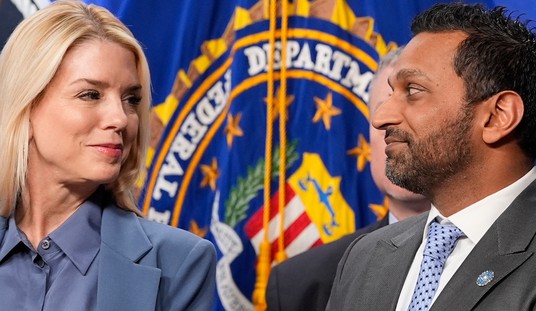Adam Toledo is the 13-year-old boy who was shot and killed by police in Chicago at the end of March. Toledo had a gun when he ran from police and dropped it behind a fence just before he was shot. However, it was 21-year-old Ruben Roman who had fired the shots into the street that prompted the police response. In fact, it wasn’t a complaint from neighbors but an alert from the city’s ShotSpotter system that resulted in officer Eric Stillman being sent to the scene.
If you’re not familiar with ShotSpotter, it’s a system of microphones which record and triangulate the position of gunfire 24/7. The system then sends an alert to police with an exact location where the gunfire was detected. The idea is to allow police to arrive on the scene of a crime in instances where neighbors never call about the shots, perhaps even to capture the shooter before he gets away or save the life of the victim.
There’s also some pushback against ShotSpotter for a variety of reasons. For one thing, because the system is expensive, police don’t deploy it everywhere but place it in the areas where they get the highest number of reports of gunshots. In many cities, like Chicago, those tend to be minority neighborhoods. For some, that creates a sort of big brother vibe with some even worried that ShotSpotter might not be just recording gunshots but might also be listening to conversations.
ShotSpotter doesn’t listen to conversations but even putting aside the more paranoid concerns, some activists point out that having the system results in police rushing into these neighborhoods at all hours of the day and night in a way that leads to minorities having more dangerous encounters with police. The death of Adam Toledo is being considered a prime example of how this can go wrong.
One of the people currently leading the pushback against ShotSpotter is Jonathan Manes, an attorney who specializes in voting rights issues for the MacArthur Justice Center at Northwestern University. Manes recently examined ShotSpotter activity in Chicago and determined that in the vast majority of cases, police are sent out because of reports of gunfire but no charges are filed:
Manes, a police surveillance technology expert, analyzed 21-and-a-half months of Chicago ShotSpotter data and said he’s concerned about the high number of times police are rushed to majority Black and Latinx neighborhoods chasing ShotSpotter alerts.
“If everybody in the city was dealing with that kind of police presence, they will be really concerned. And it’s not OK that only people who live in Black and brown neighborhoods have to deal with,” Manes said.
Through the Freedom of Information Act, the I-Team obtained and analyzed the 37,763 ShotSpotter alerts recorded in Chicago since January 2020. That data investigation revealed that in 32,469 of those incidents, when the system apparently detected gunfire, police responded but didn’t report a crime. That’s 86% of the time.
“Police go out and find nothing, they find no evidence of crime, nothing they even have to report. This was pretty shocking to us,” said Manes.
So does the fact that 86% of the time no one is there when police arrive prove the system doesn’t work? I don’t think so though that seems to be what Manes is implying. It may just prove that people like to fire guns in Chicago but know they can’t hand around long afterwards or the police will show up.
If no crime is reported 86% of the time, that suggests a crime is reported 14% of the time. And with 32,000 incidents since Jan. 2020, that still amounts to a lot of crimes: “The data investigation found that ShotSpotter alerts did lead to police reports of 4,156 violent crimes or gun related offenses since January 2020.” Would it be better if police hadn’t known about those 4,100 crimes? That seems to be what Manes is arguing, i.e. that the 14% of crimes that are reported based on ShotSpotter don’t justify the 86% of cases where crimes aren’t reported.
Manes also suggests that people in Black and brown neighborhoods don’t want this technology. Two points about this. First, the reason the technology winds up in certain neighborhoods is because those are the neighborhoods with the most crime. It’s simply an attempt to get the most bang for your buck. Second, as to whether residents in those neighborhoods want this, that depends who you ask.
One black woman in this report from Memphis, for instance, is clearly worried about the constant gunshots in her neighborhood. Would it be better if the city and the police chose to ignore most of those gunshots as a kind of urban background noise? Manes isn’t saying that but it could be the outcome of getting rid of the system. The gunshots won’t stop, police simply won’t know about them most of the time.
For their part, the CPD released a statement which said in part, “ShotSpotter has detected hundreds of shootings that would have otherwise gone unreported. The Chicago Police Department’s expansion of ShotSpotter is helping us reduce crime and make our neighborhoods safer.” As you probably already know, Chicago has a serious issue with gun crime. Just last weekend 46 people were shot and 7 were killed (two of those deaths were from knife attacks). If ShotSpotter alerted police to just one of those shootings it wouldn’t otherwise have known about, what is that worth? Then again, the system’s detractors argue if not for ShotSpotter police would never have shot Adam Toledo.
Here’s a report from CBS Chicago which tries to present both sides of the argument. Manes argues the system is a waste of money while Mayor Lightfoot, the CPD and Alderman Taliaferro all believe it’s worthwhile. This appears to be one more battle in the push to Defund Police.







Join the conversation as a VIP Member